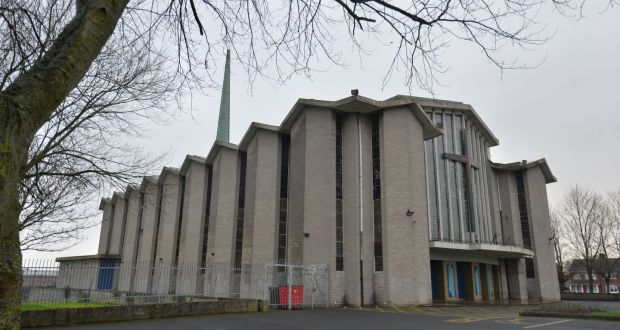We hear from the Church of England Synod that they’re planning to get to nett-zero carbon emissions by 2030.
Which is a great ambition. But people are asking, how will it be achieved? Well, we’ve had access to a top-secret document that reveals how it’s going to be done.
1. Mobile Church
In the first instance, it’s no good closing down lots of small village churches so the vicar doesn’t have to drive around. If you do that, instead everyone else drives. And that’s even worse. So one possibility is a solar-powered “Mobile Church”. On the principle of mobile libraries, this crenellated electric Transit will go from village to village, ringing a bell as it arrives in each settlement to encourage the faithful to come to prayer.
2. Renewable Pews
It’s not commonly realised that pews are a carbon sink. So instead of just replacing pews with chairs, in this scheme parishes will grow pitch pine trees in the graveyards. Then whenever the vicar fancies replacing the pews, they’ll just make some more out of the trees in the churchyard, flog the old ones to local antique shops and pubs, and plant some more trees.
3. Bees
In the old days, wax for candles was given to the church in the form of tithes. In a zero-carbon Church, candles will replace all lighting within churches. Since the churchyard will be full of pine trees, the best place to keep the bees will be on the church roofs. In this way, High Catholics will be happy with all the candles. And with all those hives on the roofs, we can expect a rapid decline in lead thefts.
4. Incense Carbon Sequestration
Not the world’s greatest source of CO2, to be fair. But still, nett zero is nett zero. In future, all thuribles will be fitted with calcium hydroxide filters to sequester the CO2. The resultant lime solution can then be dried out, and the chalk used to write above the church door at Epiphany.
5. Growing Moss on the Congregation
Moss converts CO2 into oxygen and more moss, and is a valuable habitat for small invertebrates. So members of the congregation will be encouraged to grow moss on their hats and coats. As well as helping the environment, it will also soak up rainwater when the roof is leaking. On closer inspection, the think tank discovered that roughly 50% of congregations (and 89% of elderly male priests) are already growing moss on them, so the best species for church habitats have already been identified.
6. Go Acoustic
By converting the music group to acoustic guitars and pianos instead of electric keyboards, nett use of electricity will be achieved. Some more radical thinkers have suggested going one step further, and getting rid of the instruments all together.
7. Hymn Books
Hymn books are a long-term form of carbon storage – so much better for the environment than those environmentally-unfriendly overhead projectors with their oil-based “acetates” that some of the more hip churches have adopted. Once all the lights (and heat) have been replaced by candles, hymn books once again become a viable form of showing congregations the words to sing. In a related strategy, using the old BCPs in the crypt is carbon neutral whereas disposable service folios are an environmental nightmare.
8. Raising Graveyards
Instead of banging on about not enough burial space and the terrible environmental impact of cremation, just build an extra storey on the churchyard. Raise all churchyard walls by 12 feet and you have enough space, over the next couple of centuries, to triple the carrying capacity. Instead of dirt, burials will be filled in with the moss harvested from the congregations.
9. Geothermal Heating
The ultimate renewable energy source for warming up cold-hearted Christians. A 25-mile deep hole under the chancel will provide an unlimited supply of heat on even the coldest morning. And provide ministers with a brilliant illustration when preaching about Hell. Churches with adult baptism pools may be able to achieve similar objectives using heat exchangers, but it’s nothing like as much fun.
10. Zero-New-Christians
By putting out confusing directives about sexuality, fighting over the best kind of worship and sustaining feuds between quires, ministers, organists and congregations, it may be possible to achieve a zero-new-Christians target. This will result in the Church being completely carbon neutral by about 2050, all on its own.
We hope you have enjoyed this insight from the well established blog – The Beaker Folk of Husborne Crawley



